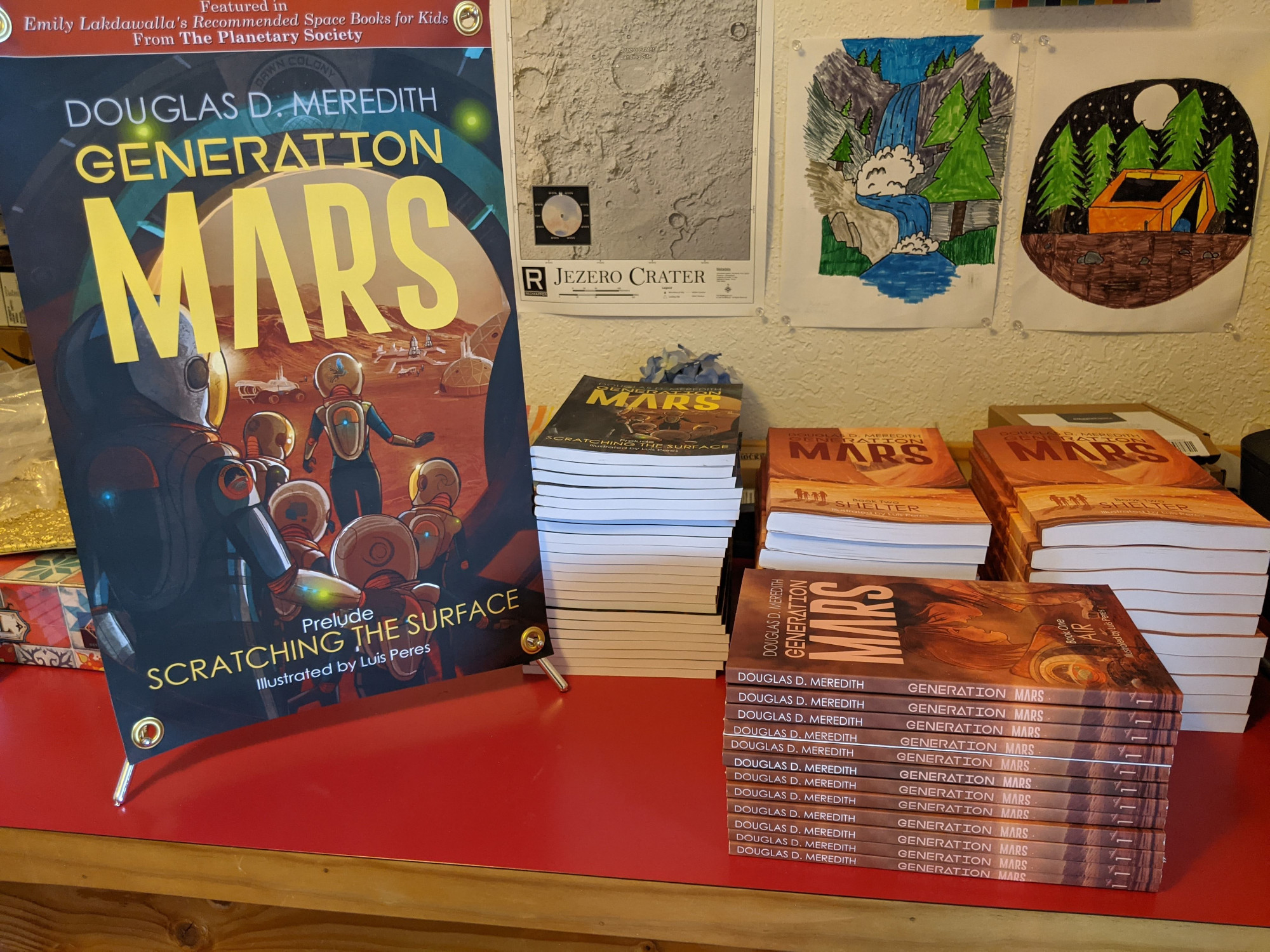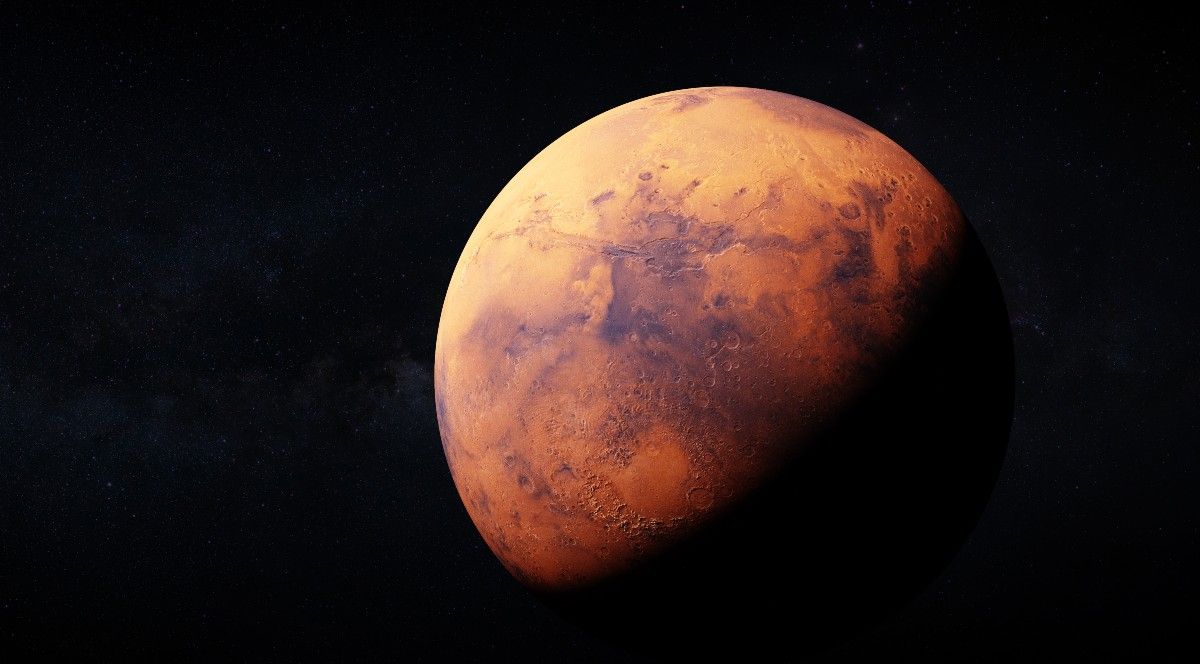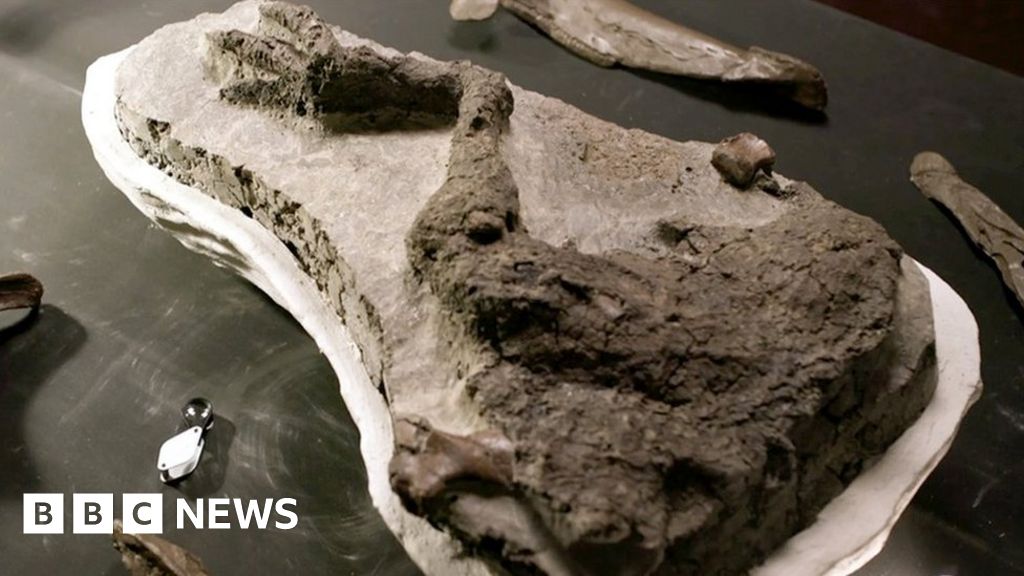Phobos transit
Well, this is cool.
Perseverance captured color video of Phobos as it transits the Sun, and it is wild. Look at lumpy Phobos! Look at the sunspots!
If you watch carefully, you’ll note that the Sun is moving up in the frame even as Phobos moves down. This is true: Phobos has such a short orbital period (7 hours and 39 minutes) that it moves west to east across the sky.
Existential risk
I’ve been reading about existential risk lately. This article is not immediately relevant to Mars or our future there. But it also kinda is.
The Tanis fossil site, in North Dakota, appears to be showing us creatures directly killed by the Chicxulub asteroid impact. The picture of that leg is reminder that “geologic time” includes now, just as it did for these organisms on a day that changed the world, 66 million years ago.
From the article:
“We’ve got so many details with this site that tell us what happened moment by moment, it’s almost like watching it play out in the movies. You look at the rock column, you look at the fossils there, and it brings you back to that day,” says Robert DePalma, the University of Manchester, UK, graduate student who leads the Tanis dig.
Marsquakes
The lack of a magnetoshpere on Mars plays a key role in the latest book, Shelter.
The magnetic field around planets like Earth is the result of a geodynamo around the molten core. Because Mars has no magnetosphere, it has long been thought that very little happens in its interior. This study suggests that there is active movement of magma inside Mars after all.
From the article:
“Knowing that the Martian mantle is still active is crucial to our understanding of how Mars evolved as a planet,” says geophysicist Hrvoje Tkalčić of the Australian National University in Australia… “The marsquakes indirectly help us understand whether convection is occurring inside of the planet’s interior, and if this convection is happening, which it looks like it is based off our findings, then there must be another mechanism at play that is preventing a magnetic field from developing on Mars,” Tkalčić says.
Transgenic lettuce
While the theme of food doesn’t come up until book four, I’m always on the lookout for relevant information. Here’s an interesting piece on the genetic modification of leafy greens to provide medication through diet.
From the article:
“A team of researchers at the University of California, Davis, have developed modified transgenic lettuce that produces a bone-stimulating hormone. The lettuce can be easily grown in space and could help strengthen an astronaut’s bones. It may even help reduce the risk of osteoporosis on Earth…”
Mars sounds weird
I touch on the nature of sound on Mars in the first book, but this is new and a little wild. It’s not just the low pressure of the atmosphere that affects the transfer of sound. The composition of that atmosphere does as well. And it’s not the same across the range of sounds we hear.
From the article:
“Due to the unique properties of the carbon dioxide molecules at low pressure, Mars is the only terrestrial-planet atmosphere in the Solar System experiencing a change in speed of sound right in the middle of the audible bandwidth (20 Hertz to 20,000 Hertz)… The result of this is that sound travels more than 10 meters per second faster at higher frequencies than it does at low ones.”
Spring Break
I’ve been away on a much needed vacation with the family for the past week.

Book festival
Generation Mars will make a rare public appearance at the Tucson Festival of Books this weekend.
I’ll be in the Indie Author Pavilion for Children’s Books on Saturday, March 12, from 2:30-4:30pm.

If you’re in the Tucson area, come by and buy a book or just say “Hi!”
Shelter is now available
Readers of all ages,
Shelter: Generation Mars, Book Two is now officially released.

The family is on an away mission when a solar particle event forces them to seek shelter where they can. As conditions go from uncomfortable to desperate, it falls to the sisters to save the family. It’s a struggle for survival in which they learn the full meaning of shelter.
Available now on Amazon:
https://www.amazon.com/dp/1733731040
Middle-Grade March promo
31 mind-bending, fantastical, out-of-this-world, roller-coaster-worthy middle-grade books to discover in March 2022!
Generation Mars has joined 30 other authors to fill your March with stories.
Each day will feature one of the outstanding books pictured.







